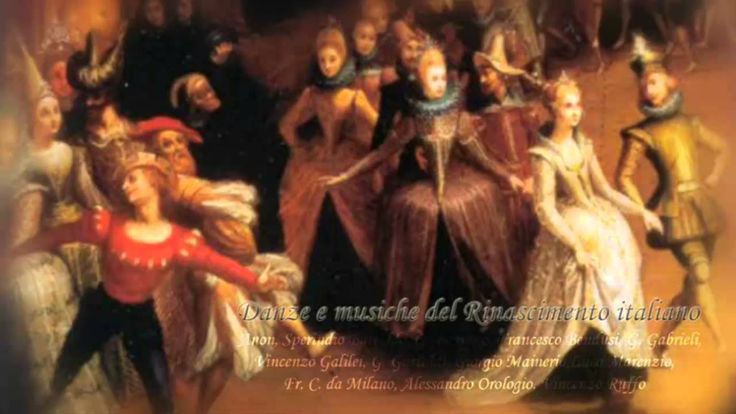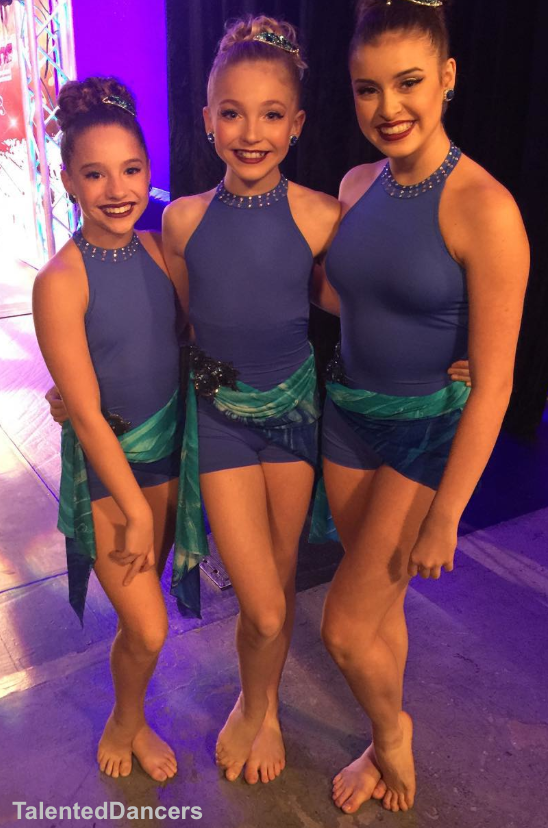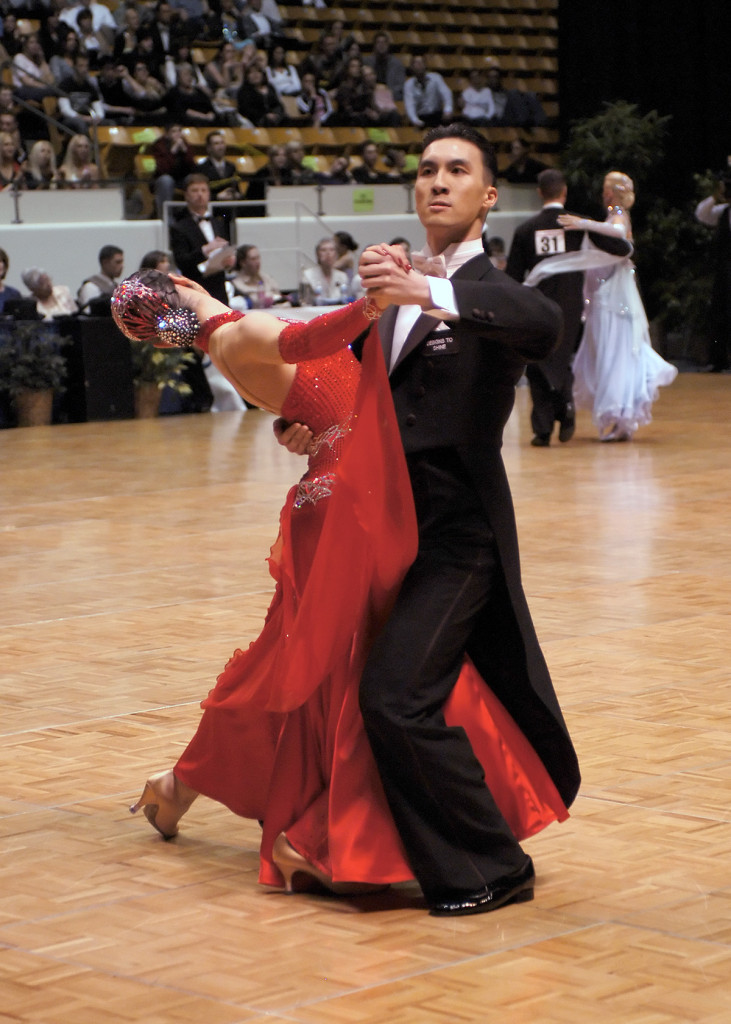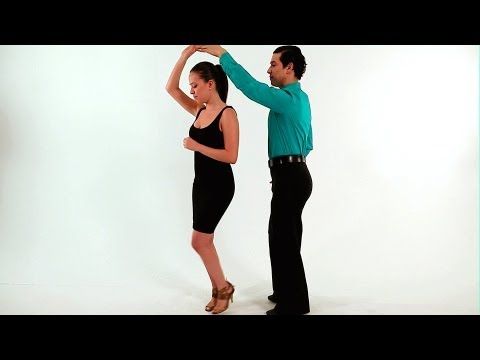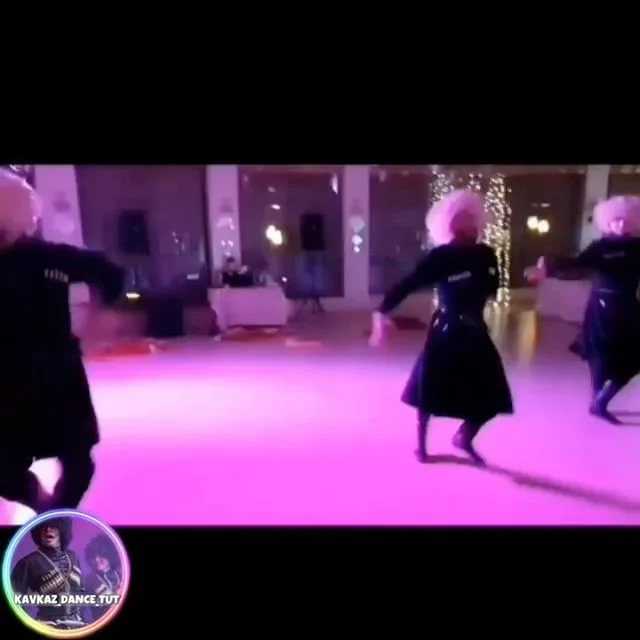How to ghost dance
James Mooney Recordings of American Indian Ghost Dance Songs, 1894
The Ghost Dance among the Oglala Lakota as depicted by Frederic Remington from sketches made at the event, Pine Ridge, South Dakota, 1890. Printed in Harper’s Weekly, December 1890. Prints and Photographs Division, Library of Congress. //hdl.loc.gov/loc.pnp/cph.3a07191
In the summer of 1894 James Mooney, a scholar of American Indian culture and language, made recordings of songs of the Ghost Dance in several languages. The James Money Recordings of American Indian Ghost Dance Songs have recently been updated and are part of the presentation, Emile Berliner and the Birth of the Recording Industry. It is likely that these recordings were sung by Mooney himself. This was not unusual, as the common practice of the time was for ethnographers to memorize songs and stories from the people they studied, performing them back to the people helping them to learn the songs so that they had as accurate a performance as possible. In this way human memory was the “recording” before actual recording technology was widely available. Even today ethnographers often learn to reproduce songs and stories from the cultures they study as part of participant/observation and because much can be learned by memorizing and repeating them.
This recording is an example of a Caddo Ghost Dance song. The Caddo Nation is a confederation of several Southeastern Indian peoples who at this time lived on a reservation in Oklahoma:
The Ghost Dance was a spiritual movement that arose among Western American Indians. It began among the Paiute in about 1869 with a series of visions of an elder, Wodziwob. These visions foresaw renewal of the Earth and help for the Paiute peoples as promised by their ancestors. This followed a period when many people had died as a result of contact with European diseases. A typhoid epidemic in 1867 may also have influenced the birth of this movement. Initially Wodziwob said that he saw some great cataclysm removing all the Europeans leaving behind only Indians, but in later visions he saw an event that removed all people from the continent, after which those who faithfully practiced the spirituality of their ancestors would be miraculously returned.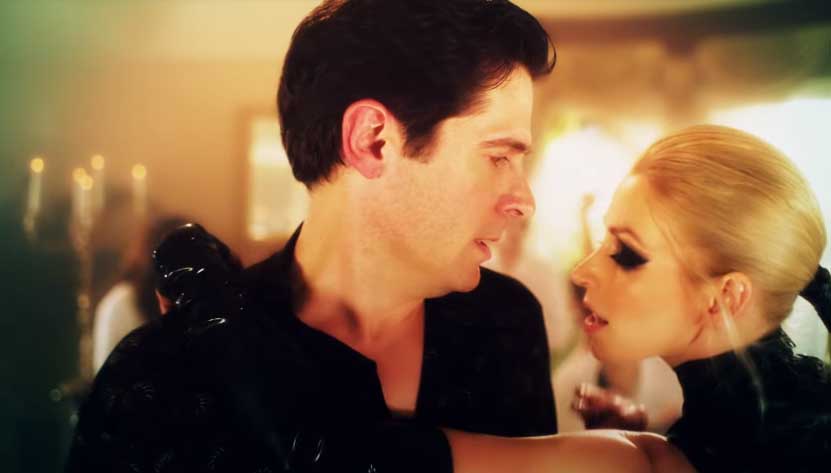 Later still, his vision no longer predicted the destruction of Europeans, but an immortal and peaceful life for those who practiced his spiritual teachings. A ceremony that featured a communal circle dance was central to the spiritual practice suggested by these visions. Wodziwob passed away in 1872.
Later still, his vision no longer predicted the destruction of Europeans, but an immortal and peaceful life for those who practiced his spiritual teachings. A ceremony that featured a communal circle dance was central to the spiritual practice suggested by these visions. Wodziwob passed away in 1872.
On January 1, 1889, a Northern Paiute named Wovoka (born Quoitze Owalso, he also took the name Jack Wilson) had a dream during the eclipse of the sun. His prophesy was similar to that of Wodziwob. He said that he saw the European settlers leaving or disappearing, the buffalo returning, and the land restored to Indian peoples all across the continent. In this vision, ancestors would be brought back to life and all would live in peace. Wovoka had been raised by the European American family of David Wilson after the death of his father. His teachings emphasized maintaining a peaceful relationship with white Americans. He had had some exposure to Christianity and so it is not surprising that there are mentions of Jesus or a messiah in his teachings. He said that by practicing the circle dance ceremony his vision of a peaceful world would be made to come about.
He said that by practicing the circle dance ceremony his vision of a peaceful world would be made to come about.
Hearing of the new prophet among the Paiute, representatives from many different tribes traveled to speak with him. Letters were sent by leaders of the movement to other Indian peoples to explain the vision and the ceremony that would help bring about the transformation of the Earth. Leaders of the movement also visited various Indian nations to help teach them about the vision and the dance.
“Ghost dance – Cheyennes & Arapahoes.” Detail of a photo taken at the Indian Congress of the Trans-Mississippi and International Exposition in Omaha, Nebraska, by Adolf F. Muhr, ca 1898. The Ghost Dance was often performed around a pole, and in this case the dancers chose to use the American Flag. //hdl.loc.gov/loc.pnp/cph.3c25485
Dancing is common among many Indian spiritual practices. The Ghost Dance was based on the round dance that is common to many Indian peoples, used as a social dance as well as for healing practices. Participants hold hands and dance around in a circle with a shuffling side to side step, swaying to the rhythm of the songs they sing. In a traditional round dance there is a drum played in the center of the circle. But the Ghost Dance ceremony did not typically use a drum. Instead there was often a pole or a tree in the center of the circle, or sometimes nothing at all. The details of the dance varied somewhat among the peoples who performed it.
Participants hold hands and dance around in a circle with a shuffling side to side step, swaying to the rhythm of the songs they sing. In a traditional round dance there is a drum played in the center of the circle. But the Ghost Dance ceremony did not typically use a drum. Instead there was often a pole or a tree in the center of the circle, or sometimes nothing at all. The details of the dance varied somewhat among the peoples who performed it.
According to Mooney, the dance induced an hypnotic state in some dancers, with some making an effort to achieve a trance. To help this process, someone would stand in the circle waving a feather or a cloth for dancers to watch. Songs with a faster rhythm were sung to help the dancers wishing to achieve a trance and perhaps experience visions. Those experiencing a trance might leave the circle of dancers and dance on their own or lie on the ground.[1] In the print by Frederic Remington at the top of this article, the circle of dancers are in the background. In the foreground are people who have dropped out of the dancing as Mooney described.
In the foreground are people who have dropped out of the dancing as Mooney described.
The Ghost Dance songs had a common pattern of a line repeated twice, then another line repeated twice, and so on. According to Judith Gray, the American Folklife Center’s expert on American Indian music and song, this pattern was common among the Paiute and other peoples of the Northwest Plateau, but was not used among the Plains Indians or many of the other peoples who took up the Ghost Dance. But the people adopted this song form that was new to them and used it as they made Ghost Dance songs in their own languages.
This recording is of two Arapaho Ghost Dance Songs. The first is a slower song than the second:
The Ghost Dance ceremony to spread rapidly to many different Indian peoples, mainly in Western states. This interaction between Indians distant from each other and the spread of the dance became alarming to European Americans and so became a concern for the United States Army.
While many European Americans were alarmed by the Ghost Dance and saw it as a militant and warlike movement, it was quite the opposite — an emergence of a peaceful resistance movement based on Indian beliefs. It was also a movement of desperation, as existing treaties had been violated and Indians in the West were forced onto reservations. For the Plains Indians, this was a period of starvation as the buffalo were slaughtered, destroying their way of life and main source of food. From an Indian point of view, Europeans were not only destroying the way of life of Indian peoples, but destroying the natural resources of the plains to an extent that would make it impossible for anyone to live there. European Americans often saw the Ghost Dance as irrational. From an Indian point of view, what was being done to them and their way of life was irrational.
James Mooney wrote a book about the Ghost Dance, hoping it would help to counter newspaper articles about it that were inaccurate and promoted prejudice toward the Indians. His research was first published as part of a report in 1890, then enlarged as a book in 1896. The press encouraged popular belief that the dance was dangerous and possibly a prelude to an Indian uprising. Mooney emphatically explained that it was peaceful. In his introduction he describes several fieldwork trips between 1890-1894 that “occupied twenty-two months, involving nearly 32,000 miles of travel, and more or less time spent with about twenty tribes.” [2] As a participant/observer he sang and danced with the Arapaho and Cheyenne, consulted with participants in the new religion, and also took photographs. One reason for the excitement about the Ghost Dance among ethnographers at that time was that the researchers of American Indians were seeing the emergence of a new religion developing in a surprisingly short time and crossing culture and language barriers. This was an extremely rare event.
His research was first published as part of a report in 1890, then enlarged as a book in 1896. The press encouraged popular belief that the dance was dangerous and possibly a prelude to an Indian uprising. Mooney emphatically explained that it was peaceful. In his introduction he describes several fieldwork trips between 1890-1894 that “occupied twenty-two months, involving nearly 32,000 miles of travel, and more or less time spent with about twenty tribes.” [2] As a participant/observer he sang and danced with the Arapaho and Cheyenne, consulted with participants in the new religion, and also took photographs. One reason for the excitement about the Ghost Dance among ethnographers at that time was that the researchers of American Indians were seeing the emergence of a new religion developing in a surprisingly short time and crossing culture and language barriers. This was an extremely rare event.
Mooney traced the beliefs of the Ghost Dance movement to earlier spiritual prophesies among many Indian groups that predicted a restoration of their land and the return of life as it was lived before Europeans settled the Americas.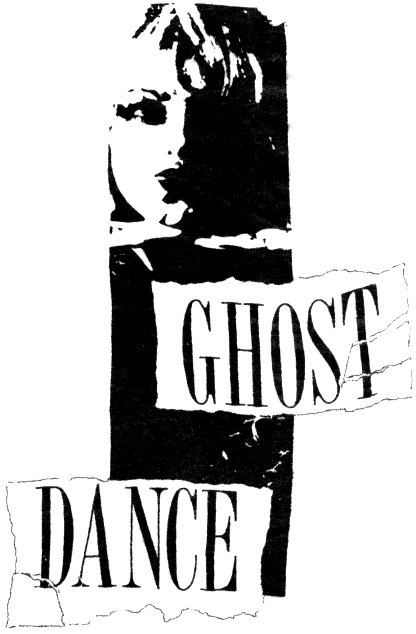 These emerged not long after the first settlements were established and conflicts between Europeans and Indians began.[3] So although the Ghost Dance seemed to emerge suddenly, the ideas found in it had a long history among many different Indian groups.
These emerged not long after the first settlements were established and conflicts between Europeans and Indians began.[3] So although the Ghost Dance seemed to emerge suddenly, the ideas found in it had a long history among many different Indian groups.
The body of Spotted Elk, chief of the Miniconjou, Lakota Sioux, lying in snow, after the Massacre at Wounded Knee, South Dakota, December 29, 1890. Written on the photo is “Big Foot, chief of the Bules [sic] taken at the Battle of Wounded Knee, S.D.” Published by Trager and Kuhn c 1891. Prints and Photographs Division, Library of Congress. //hdl.loc.gov/loc.pnp/cph.3c16812
The Ghost Dance was associated with one of the great tragedies of American history. In December 15, 1890, during a dispute about a Ghost Dance ceremony, police killed Chief Sitting Bull at Standing Rock Reservation, South Dakota. After this, a group of over 300 Miniconjou Lakota men, women, and children led by Chief Spotted Elk (also called Big Foot) left the Standing Rock Reservation to try and reach the relative safety of the Pine Ridge Reservation. They were detained by United States Army at a creek called Wounded Knee and held at gunpoint, including Hotchkiss guns, an early type of machine gun. The men were separated from the women and children and as the soldiers confiscated weapons from the men, something happened and shooting began. According to some accounts one man, who may have been deaf, refused to give up his rifle. The number of dead is among many things about this incident that are disputed, but between 150 and 300 Indians were killed, many of them unarmed women and children. The larger figures given by historians include those died of exposure and their wounds after the battle, including small children whose mothers had been killed. Spotted Elk, who was unarmed and suffering from pneumonia, was shot as he lay on the ground. The Army lost 25 men.
They were detained by United States Army at a creek called Wounded Knee and held at gunpoint, including Hotchkiss guns, an early type of machine gun. The men were separated from the women and children and as the soldiers confiscated weapons from the men, something happened and shooting began. According to some accounts one man, who may have been deaf, refused to give up his rifle. The number of dead is among many things about this incident that are disputed, but between 150 and 300 Indians were killed, many of them unarmed women and children. The larger figures given by historians include those died of exposure and their wounds after the battle, including small children whose mothers had been killed. Spotted Elk, who was unarmed and suffering from pneumonia, was shot as he lay on the ground. The Army lost 25 men.
Mooney gives a detailed account of the events leading up to the conflict, the conflict, and its aftermath. He includes first-hand accounts of the conflict and accounts from Indians who went to the site of the conflict shortly after to look for survivors. He attributes the differing figures on the number of people who died in a failure to account for the people who did not die at once in the battle. He estimates that about 300 people were killed, died later of their wounds, or died of exposure.[4]
He attributes the differing figures on the number of people who died in a failure to account for the people who did not die at once in the battle. He estimates that about 300 people were killed, died later of their wounds, or died of exposure.[4]
In atmosphere of the fear of the Ghost Dance of these times, this event was called a battle, the soldiers were called heroes, and they received the Congressional Medal of Honor. Today the incident is called the Wounded Knee Massacre. The change of view came about in 1971 with the publication of the history Bury My Heart at Wounded Knee: An Indian History of the American West by Dee Brown and the rise of the Indian civil rights movement. At last the Indian side of history was being told. I remember this moment because I was just finishing high school and I was upset by the way my history books and history teachers portrayed American Indians. I had already read Vine Deloria’s Custer Died for your Sins: An Indian Manifesto.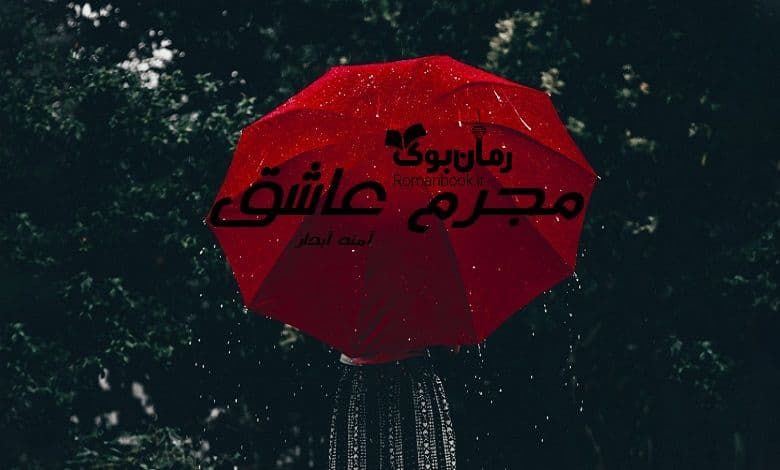 My mother had bought and read Dee Brown’s new book and she gave it to me saying only “Here, you need to read this.”
My mother had bought and read Dee Brown’s new book and she gave it to me saying only “Here, you need to read this.”
It was two years after the terrible events at Wounded Knee that Mooney first published his research. He intended to calm fears that might lead to further violence. He did newspaper interviews and became the leading expert on the Ghost Dance. His recordings of Ghost Dance songs were also an attempt to preserve something about the reality of the Ghost Dance. But in the popular ideas of the time, the Ghost Dance was a threat to America that ended 1890 in the snow in South Dakota during that massacre. Some histories of these events still say so. The Bureau of Indian Affairs attempted to ban the Ghost Dance, also contributing to the idea that it had ended. But in fact the Ghost Dance ceremony continued to be performed into the early 20th century and some of the songs are preserved in the traditions of Indians today. Examples of Ghost Dance songs sung by Indians in various languages can be found in the collections of the American Folklife Center (available on site only). Researchers in our archive and others should know that some collectors described these as “new religion songs” rather than Ghost Dance songs.
Researchers in our archive and others should know that some collectors described these as “new religion songs” rather than Ghost Dance songs.
In 1973 a protest by the Lakota Sioux took place at Wounded Knee as part of the Indian rights movement, showing the importance that the events there continue to hold for Native Americans. I think some aspects of the ideas in Ghost Dance spirituality exist in Indian rights expressions even today — the idea of peaceful resistance to prejudice and oppression, for example. Listen to the recordings, and see what you think.
Notes
- Mooney, James. “The Ghost Dance Religion and the Sioux Outbreak of 1890.” Published in the Fourteenth Annual Report of the Bureau of Ethnology, 1892-93, Part 2, pp. 922 -926. Available online. Other editions available.
- Mooney, James. “The Ghost Dance Religion and the Sioux Outbreak of 1890,” p. 654. Available online. Other editions available.
- Mooney, James.
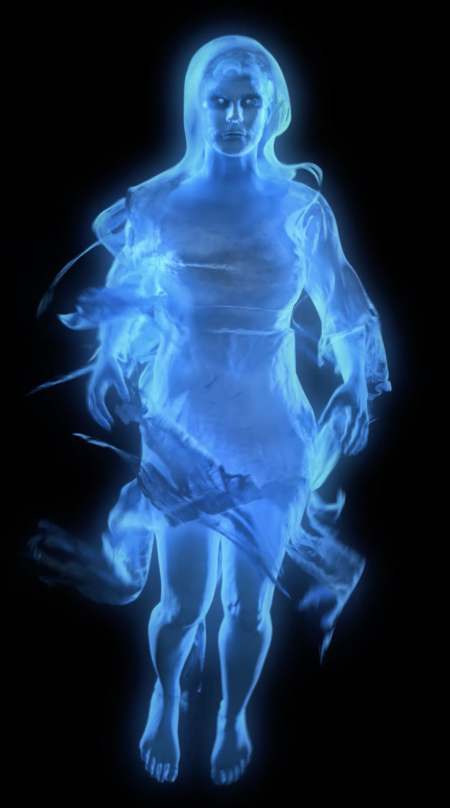 “The Ghost Dance Religion and the Sioux Outbreak of 1890,” pp. 657-706. Available online. Other editions available.
“The Ghost Dance Religion and the Sioux Outbreak of 1890,” pp. 657-706. Available online. Other editions available. - Mooney, James. “The Ghost Dance Religion and the Sioux Outbreak of 1890,” pp. 824-894. Available online. Other editions available.
Ghost Dance | Definition, Significance, Wounded Knee, & Facts
Ghost Dance
See all media
- Date:
- c. 1869 - c. 1900
- Related People:
- Wovoka
See all related content →
Ghost Dance, either of two distinct cults in a complex of late 19th-century religious movements that represented an attempt of Native Americans in the western United States to rehabilitate their traditional cultures. Both cults arose from Northern Paiute (Paviotso) prophet-dreamers in western Nevada who announced the imminent return of the dead (hence “ghost”), the ousting of the whites, and the restoration of Native American lands, food supplies, and way of life. These ends, it was believed, would be hastened by the dances and songs revealed to the prophets in their vision visits to the spirit world and also by strict observance of a moral code that resembled Christian teaching and forbade war against Native Americans or whites. Many dancers fell into trances and received new songs from the dead they met in visions or were healed by Ghost Dance rituals.
These ends, it was believed, would be hastened by the dances and songs revealed to the prophets in their vision visits to the spirit world and also by strict observance of a moral code that resembled Christian teaching and forbade war against Native Americans or whites. Many dancers fell into trances and received new songs from the dead they met in visions or were healed by Ghost Dance rituals.
The first Ghost Dance developed in 1869 around the dreamer Wodziwob (died c. 1872) and in 1871–73 spread to California and Oregon tribes; it soon died out or was transformed into other cults. The second derived from Wovoka (c. 1856–1932), whose father, Tavibo, had assisted Wodziwob. Wovoka had been influenced by Presbyterians on whose ranch he worked, by Mormons, and by the Indian Shaker Church. During a solar eclipse in January 1889, he had a vision of dying, speaking with God in heaven, and being commissioned to teach the new dance and millennial message. Native Americans from many tribes traveled to learn from Wovoka, whose self-inflicted stigmata on hands and feet encouraged belief in him as a new messiah, or Jesus Christ, come to the Native Americans.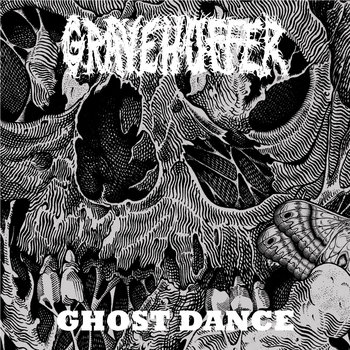
Britannica Quiz
Ghosts: Fact or Fiction?
Eek, a ghost! Or is that a ghost bat? Or a word game? Test your knowledge of all kinds of ghosts with this true or false quiz.
Thus, the Ghost Dance spread as far as the Missouri River, the Canadian border, the Sierra Nevada, and northern Texas. Early in 1890 it reached the Sioux and coincided with the rise of the Sioux outbreak of late 1890, for which the cult was wrongly blamed. This outbreak culminated in the Massacre at Wounded Knee, South Dakota, where the “ghost shirts” failed to protect the wearers, as promised by Wovoka.
As conditions changed, the second Ghost Dance became obsolete, though it continued into the 20th century in attenuated form among a few tribes. Both cults helped to reshape traditional shamanism (a belief system based on the healing and psychic transformation powers of the shaman, or medicine man) and prepared for further Christianization and accommodation to white culture.
The Editors of Encyclopaedia BritannicaThis article was most recently revised and updated by Brian Duignan.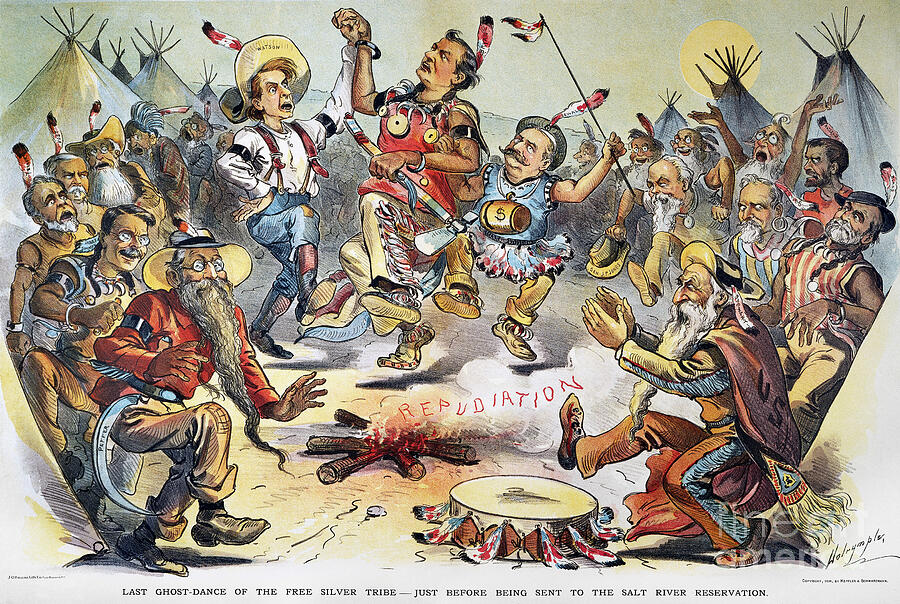
Page not found - Indigenous!
Unfortunately the page you're looking doesn't exist (anymore) or there was an error in the link you followed or typed. This way to the home page.
- Main
- About site
- Contact
- Questions and answers
- History
- History in dates (January)
- History in dates (February)
- History in dates (March)
- History in dates (April)
- History in dates (May)
- History in dates (June)
- History in dates (July)
- History in dates (August)
- History in dates (September)
- History in dates (October)
- History in dates (November)
- History in dates (December)
- Interview
- Culture
- Literature
- Legends
- Legends 2
- Music
- A little humor
- Petitions
- "In the footsteps of Iktomi"
- Proverbs and sayings
- Way of life
- Contemporary
- Links
- Stereotypes
- Flags of nations
- Flags of nations 2
- Flags of nations 3
- Shamemen and other new age
- 02/28/2020 - Antelope Woman.
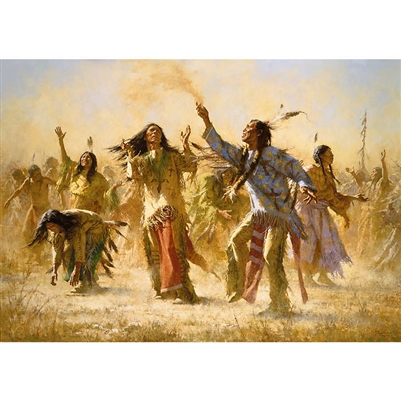 Wolf Wife. Two hawks. Frog. Crane and Otter. Vi`skedidi`N. Eagle and Loon. Wolves and wolverine. Skunk. Grizzlies (Assiniboins).
Wolf Wife. Two hawks. Frog. Crane and Otter. Vi`skedidi`N. Eagle and Loon. Wolves and wolverine. Skunk. Grizzlies (Assiniboins). - 02/28/2020 - Buffalo Boy (Assiniboins).
- 02/27/2020 - Indians, convicts and slaves. War of Victorio.
- 02/18/2020 - Dunvali. William Keeler. Elias Cornelius Boudinot. John Ross. John Adair. Stand Waity. Elias Boudinot. Ned Christy. Tachi.
- 02/11/2020 - Thomas Wildcat Alford. Tenskwatawa. Nonelima. Blue Uniform. Black Hoof. Charles Bluejacket.
- 01/21/2020 - Conversations with whales. Religious aspects of hunting. Crown of Honor.
- 01/20/2020 - Execution at Fort Laramie 1865. Invasion of the Black Hills.
- 01/18/2020 - Dance of the Ghosts
- 01/17/2020 - "We are returning our ancestors to their lands." The way the red man looked at it. Migration of the Sioux and Winnebago. Survival on Crow Creek.
- 12/27/2019 - The boy on the moon. Beaver and Muskrat. Brides and pants (vuntut gwichin).

- 12/26/2019 - Arrow ladder (tlingit).
- 12/17/2019 - Petalesharo. Pitaresar. White Eagle. White fox.
- 12/14/2019 - Four winds. Epigea creeping. Dissatisfied stone (Iroquois).
- 12/12/2019 - Women as the meaning of existence. Cultural and religious roles of women. One old Sacho.
- 07/12/2019 - A young man and Mishosha (anishinabi).
- 06/12/2019 - Little Burnt Face. Woodpecker girls. Rabbit and Otter. How did the pines appear? Wind Bird (Mikmak).
- 05/12/2019 - The advent of maple syrup. Heavenly Woman: the beginning. Spirit of the lake (mohawk).
- 04/12/2019 - Ugly wild boy (Zuni).
- 02/12/2019 - How fairies appeared. Summer fairies. In the land of the northern lights (Algonquins).
- 01/12/2019 - Ceremonies. Two spirits. Oral Traditions: California Tribes, Haida, Teton
- 01/12/2019 - Massachusetts before the arrival of the Pilgrims. Natik is a prayer town. Tidal Wars. "First Thanksgiving" - was it?
- 11/30/2019 - Star and water lilies.
 Fairy Lilinau. Niagara and the Great Lakes. Skunk wife. Maple sugar. Shingebiss and the Northwest Wind (anishinabi).
Fairy Lilinau. Niagara and the Great Lakes. Skunk wife. Maple sugar. Shingebiss and the Northwest Wind (anishinabi). - 11/28/2019 - The emergence of clans. Good hawk. Potty boy (Hopi).
- 11/26/2019 - Spirit Rock. Thunderbirds. Bigfoot (menominee)
- 11/24/2019 - Gray woodpecker. Singing girls. Star Maidens (wyandot).
- 11/16/2019 - How a hunter became a partridge. Rabbit and Wild Cat (passamaquoddy).
- 11/15/2019 - Washita.
- 08/11/2019 - A journey called "femininity". Menstruation and menarche.
- 06/11/2019 - Grab it, cover it with a blanket, sing a song and steal her moccasins. Kinship.
- 10/31/2019 - The origin of animals. Coyote and Skunk. Coyote eyes. Sack and Pot (Apache).
- 10/31/2019 - Myths about the Indian casino. How did modern Indians get rich? Tribal casinos.
- 10/30/2019 - Russell Means on matriarchy. Why do tribes have a matrilineal social system? Iroquois matriarchy. Women's spirituality.

- 10/25/2019 - Lame warrior. Heavenly Husband. Nihansan and plums. Nihankan and the arrow of the dwarf. Magic Springs. The old burdock. How the Earth (arapaho) appeared.
- 10/23/2019 - Beginning of the end: peace commission 1867 - 1868.
- 10/18/2019- Adventure of two lieutenants. General Sully's Bloody Campaign of 1864. Fetterman's fate. Cleanup of the Central Plains.
- 11/10/2019 - Greasy Grass, 1876. Memories of participants in the battle.
- 10/10/2019 - Solar Vulture. Hawks and bison. Chief Little Boy (wichita).
- 06/10/2019 - Washita - battle or massacre? Bloody snow of Vashita.
- 10/02/2019 - Song about horses. Coyote in Navajo Religion and Legend. Hasdzhelti and Hostjogon. Little Dawn Boy (Navajo).
- 01/10/2019 - Hornet and ant. Beaver and fire (Nez Perce).
- 09/30/2019 - How Turtle Island appeared. Shavondazi and the golden-haired maiden (anishinabi).
- 09/29/2019 - Rabbit and Wild Cat. Little people.
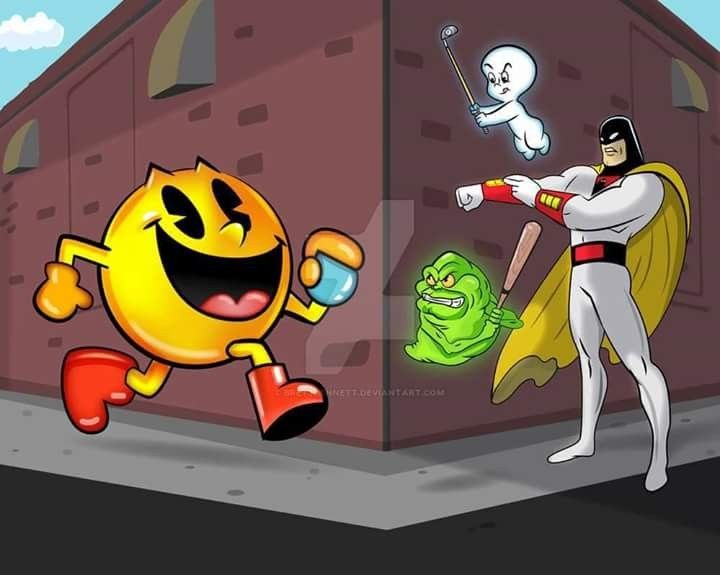 Old dog (Alabama-Cushatta).
Old dog (Alabama-Cushatta). - 09/28/2019 - "What is in my name to you." Ceremonies and rituals: Anishinabi, Apache, Arapaho.
- 09/25/2019 - Traditional wars on the northern plains. Warrior women. The path of war.
- 09/24/2019 - Corn Woman. Journey to Heaven. Snake Woman. Possum and Bat. Hummingbird and Crane. Owl and mouse. Rabbit and resin stuffed animal (Alabama-Cushatta).
- 21/09/2019 - Cherokee Spirituality. Circle path. The power of Cherokee women. Traditional dress. Tattoos. Decorations. Warrior dance. Tubes. Beloved: cities, men, women.
- 09/17/2019 - The legend of the origin. Great Flood. How the Bear Lost Fire. How diseases appeared. Rabbit and Sun. Water game. Gift of the Hawk (Alabama-Cushatta).
- 09/15/2019 - Woman Leader. Another Magpie. Arapush. Curly.
- 09/13/2019 - Regions. Architecture. Spirituality and Ceremonial Practices: California, Northwest Coast and Southeast Alaska, Plains, Plateau, Southeast
- 11/09/2019 - The archeology of discord.
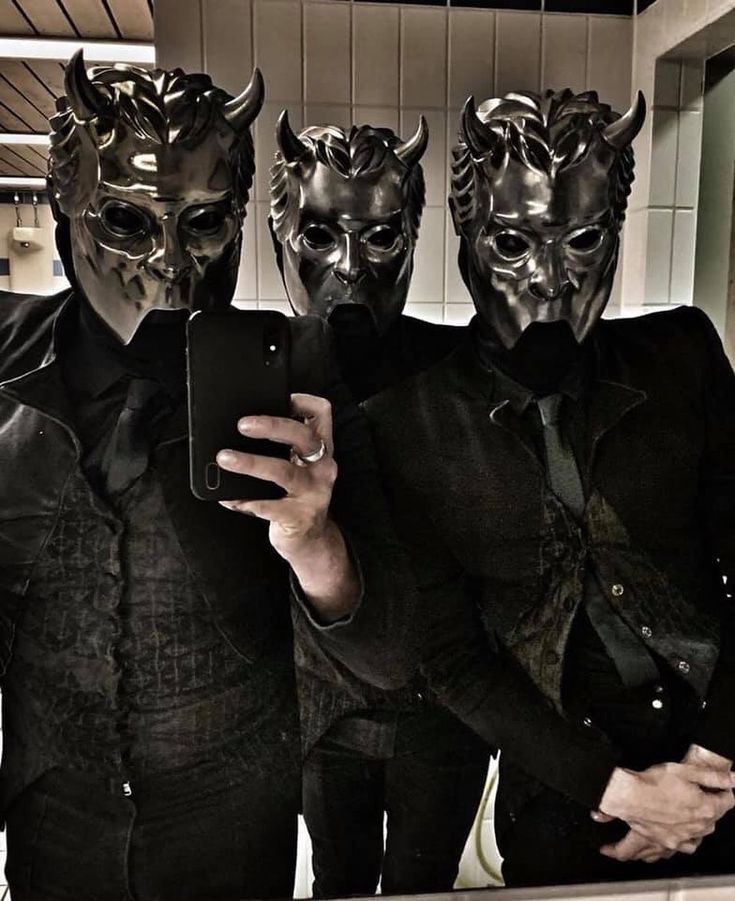
- 06/09/2019 - Satanta. Satank. A big tree. Lone wolf. Big Bow. Bobby Onko.
- 04/09/2019 - Bison magic. Nuanuh moccasins. Raid for horses. Ghost Warrior. Big Owl. Otter and Fox. Fox and Owl. Rabbit and Turtle. Coyote girl (Comanche).
- 08/31/2019 - Carnage Canyon.
- 08/19/2019 - The legend of a little girl. How Coyote freed the buffalo. Seven Stars. The appearance of months and death. Miracle bowler. Coyote steals horses. Deer Magic (Comanche).
- 12/08/2019 - How the Wolf outwitted the cunning one. Coyote and bear. Juggler eyes. Weasel and Owl. Coyote and prairie dogs. Creation of the Earth (Shoshoni).
- 09/08/2019 - The youth and the snakes. Deer Woman (Lipan Apache).
- 07/08/2019 - Prairie dogs save a woman. Horse ceremony. The dead man saves the girl. The coyote frees the bison. Coyote and Wild Cat (Lipan Apaches).
- 04/08/2019 - The appearance of the Lipan Apaches. Birth of the Enemy Killer. Enemy Slayer kills monsters.
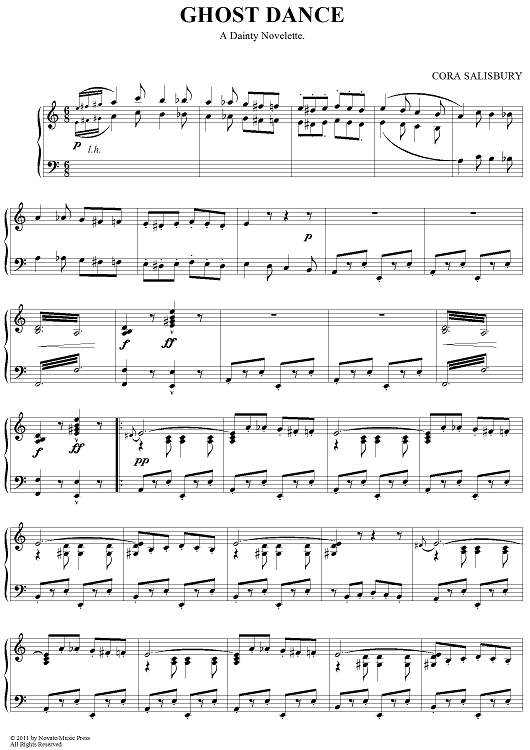 Killer of Enemies and Wise. The Enemy Slayer goes to war. Wind and Thunder (Lipan Apache).
Killer of Enemies and Wise. The Enemy Slayer goes to war. Wind and Thunder (Lipan Apache). - 27/07/2019 - Coyote and Mountain Lioness (caddo).
- 07/25/2019 - The path of the Cyclone. Brothers and cannibals. Death of a cannibal. Arrows for the ghost. Giant turtle. Rabbit and Mountain Lion teeth. Why do hawks have thin legs (caddo).
- 07/19/2019 - The origin of animals. Evening Star and Orphan Star. Tonin. The orphan gains strength. Mother of All Pecan Trees. She Who Calls the Bison. Dreamer (caddo).
- 07/19/2019 - Courageous Bird. Floyd Westerman. Tim Jago. Mary Katherine Sacred White Buffalo. Many horses. Pawnee killer.
- 10/07/2019 - Wounded Knee - medals of infamy.
- 04/07/2019 - Coluscap meets impostor uncle (maliset).
- 03/07/2019 - Turtle is getting married. The turtle is hunting the whale. Turtle compete. Turtle hunts moose. Coluscap and impostor. Mikumwesu kills an impostor (maliset).
- 02/07/2019 - Canadian Indians: quality of life.
 Reservation: life or survival? Loss of hope. Canadian Indians live worse than immigrants.
Reservation: life or survival? Loss of hope. Canadian Indians live worse than immigrants. - 06/20/2019 - Mikumwesu chooses a wife. Disappearance of Little Thunder. Search for Little Thunder. Return of Little Thunder. Clu visits Turtle. On council (maliset).
- 06/13/2019 - Coluscap and Akwulabemu. Coluscap and giant beaver. Coluscap and Izignapogos. Coluscap and giant skunk. Coluscap and Malsum. Coluscap heals girls (maliset).
- 12/06/2019 - Cheyenne blanket. Gods of the West (Pawnee).
- 06/10/2019 - We are against the border wall.
- 06/10/2019 - Indians in the NHL. Indians who won the Stanley Cup.
- 03/06/2019 - How the Earth appeared (potawatomi).
- 05/27/2019 - Flint visits Rabbit. Atagahi. Ice Man (Cherokee).
- 05/23/2019 - Thunderbird. Lucky boy (passamaquoddy).
- 05/20/2019 - Little Wolf. Wolf With High Withers. Yellow Hair. High Bull. Dull Knife. Bear Heart. Joseph Fire Crow. Mo-chi.
- 05/16/2019 - Origin of Yosemite (Mivok).

- 05/15/2019 - Brother and sister. Geha and the boy. Find your father (Seneca).
- 05/13/2019 - Fire race (karuk).
- 12/05/2019 - White Potato Clan (screams).
- 09/05/2019- The old man at the beginning of time (crow).
- 08/05/2019 - The origin of our flowers. Great Flood (Ottawa).
- 07/05/2019 - Anachareo. Robert Hill. Atotarho. Black Snake. Chief John Big Tree. Os-Ke-Non-Ton. Deh-ev-mis.
- 03/05/2019 - How a wild cat caught a turkey. The rabbit and the opossum are looking for wives. The rabbit and the bear are having lunch. The rabbit leaves the wolves. Why mink stinks. Man and stump. Cedar (Cherokee).
- 01/05/2019 - Dance of the Dead (luiseño).
- 04/30/2019 - Bear Hunter. Shoshone Mike.
- 04/30/2019 - The snake boy. The hunter becomes a snake. Revenge of the rattlesnakes. How the stripes on the bullfrog's head appeared. Grasshopper warning. Snake fight (Cherokee).
- 04/29/2019 - Fire Woman.
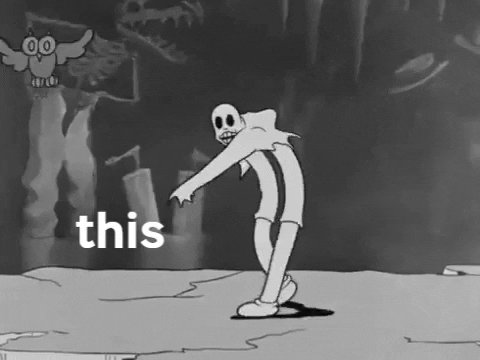 Third Thunder. Origin of death. How the Rabbit hunted ducks. How did the deer get the antlers. Why does the Possum have a bald tail. Hunter and Dakwa (Cherokee).
Third Thunder. Origin of death. How the Rabbit hunted ducks. How did the deer get the antlers. Why does the Possum have a bald tail. Hunter and Dakwa (Cherokee). - 04/27/2019 - The power of healing. Spirit of Corn (Tuscarora).
- 04/25/2019 - Two old men. Star feathers. Bear songs. How the Moon went to the Sun. Tlanuv's nest. Grom's helpers. How the Spider got the fire. Dressed in Stone (Cherokee).
- 04/22/2019 - History of fish. Girl Laughing Warrior (teva).
- 04/19/2019 - Fox and rabbit. The bird finds a husband. Panther and Whirlwind. Wren. Woman and dog on the moon. Twelve stars. Battle with snakes. Bear and Turtle (Seneca).
- 04/14/2019 - Birds and the flood. Why Apaches are cruel (pima).
- 13/04/2019 - The path of the sun. Finding fire. Coyote and Hare. Coyote and Deer (Sia).
- 04/10/2019 - Foxes and the Sun (Yurok).
- 06/04/2019 - Thunder and Lightning. The first man and woman. Flooding in Sacramento (Maidu).
- 05/04/2019 - The flood and the acquisition of fire (tolova).
- 04/04/2019 - The legend of the flood (ashochimi).
- 03/04/2019 - "Smallpox in blankets". Smallpox battle.
- 02/04/2019 - Keiho.
- 03/30/2019 - Creation of the world (Achomawi).
- 03/29/2019 - The shot that broke the peace
- 03/28/2019 - Coyote and the origin of death. Lightning and people. Hungry Coyote. How Coyote imitated his friends (caddo).
- 03/25/2019 - Kansas: environment and violence.
- 03/24/2019- The ghost of a white deer. Bird Clan (Chickasaw)
- 03/23/2019 - Red bird. Deer and persimmon. Alligator power. The man who became a deer. Possum and Raccoon. Last way. Tanchi. Tower of Babel. Trail of Tears (choctaw).
- 03/22/2019 - Blood for blood.
- 03/16/2019 - Vodzivob. Posey. Chipeta. Tse-not-gat.
- 03/16/2019 - The origin of the Magic Pipe. Bison stone. The old man and the little bird. The old man and the coyote.
The old man and the bear. The old man and the deer. The old man and the stone (black-footed).
- 09/03/2019 - Annavan. Avashonks. Metacomet. Massasoit.
- 03/03/2019 - Desecration of fire. Birds and cannibal. Sons of the cannibal. The emergence of corn (natchez).
- 02/28/2019 - How Old Man Coyote fooled the birds. Old Man Coyote learns to fly. Old Man Coyote and Mouse. Old Man Coyote and maple. Failed groom. Old Coyote and his mother-in-law (Crow).
- 02/25/2019 - Navajo: "kissed by the sun". Forced sterilization.
- 02/25/2019 - A Word to Indigenous People
- 02/22/2019 - How the Kingfisher got the color red (clallam).
- 02/16/2019 - How U`stapu broke his hand to the wind. Sun and moon. Fire theft. Red-winged blackbird. Great flood (chitimacha).
- 02/15/2019 - War of birds and animals. Rabbit and Turtle. Rabbit and Esarketununesi. Rabbit and Panther. The rabbit is flying. Gifts of the Four. Origin of animals (clans) (shouts).
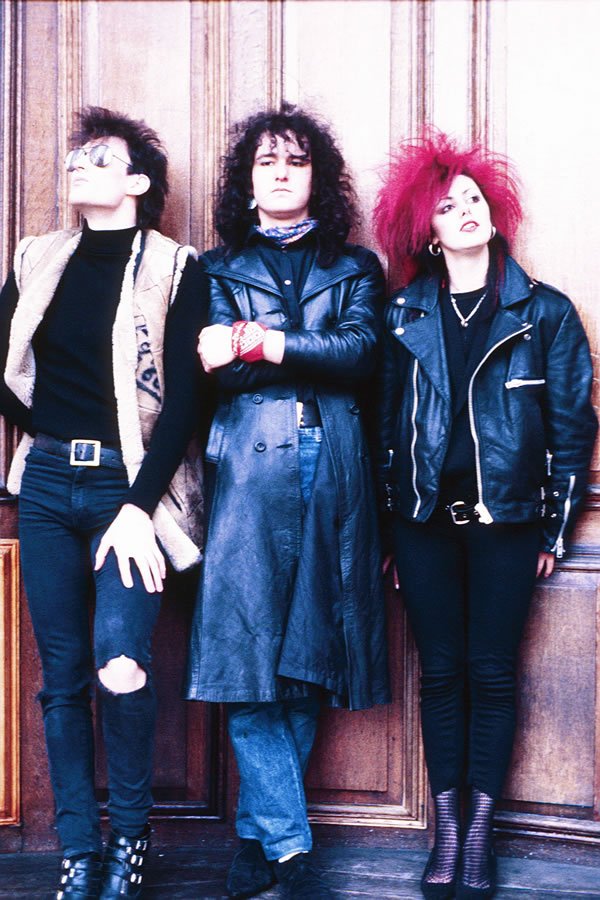
- 02/13/2019 - Bear and Rabbit. Water (hitchiti).
- 02/11/2019 - Eagle's nest. Liberation of the Sun. Bears and Fire. Bear people (Alabama).
- 10/02/2019 - I write what comes to me.
- 02/10/2019 - Return to the ancestors.
- 02/10/2019 - The Confounded Sun. Resin doll. How the Turkey Dog defeated (Biloxi).
- 07/02/2019 - Gluskup and Wind Eagle. Witcher story. Indian summer. Culoscope and tube. Drum spirit. Gluskup and maple syrup. Origin of maize (Abenaki).
- 01/27/2019 - Blatant disrespect and intolerance.
- 01/10/2019 - The appearance of the Sun (tunic).
- 09/01/2019 - Kochkakoeshke.
- 12/28/2018 - Old Man Pokoh. North Star (Paiute).
- 12/26/2018 - Coyote and blue bird. Well baked little men. Origin of light (pomo).
- 12/25/2018 - Creation of the Old Mole. How the Old Man from Above created the world (shasta).
- 12/23/2018 - How the deer got his shirt. Shy grooming. The wisdom of a simpleton.
 Loyalty of lovers (Lakota).
Loyalty of lovers (Lakota). - 12/16/2018 - Flight of the Seneca boys. Revenge of the Cherokee. Seneca peacekeepers. Raid on Tikvali'tsi. The last shawano invasion. Careless housewife (Cherokee).
- 12/10/2018 - Bride from the South. Hunter and Selu. Underground panthers. Little people. Origin of Bears: Bear Songs. Whirlpool with ghosts (Cherokee).
- 11/30/2018 - Placido. El Mocho.
- 11/24/2018 - How the partridge got hold of the whistle. How did the cardinal turn red? How hummingbirds competed with cranes. The owl is getting married. Eagle's revenge. Hunter and Vulture (Cherokee).
- 11/18/2018 - Why does the mole live underground. Revenge of the wolf - the wolf and the dog. How a turkey got a beard. Why does a turkey chirp. Like a kingfisher got a nose (Cherokee).
- 08/11/2018 - Why do trees shed their leaves. Origin of medicine. Journey to the Rising Sun. Origin of the Pleiades and Pines. The appearance of strawberries (Cherokee).
- 10/31/2018 - The legend of the eagle.
 How Grandma Spider Stole the Sun. Global flood. What do the stars look like? Milky Way. Great Hornet: the appearance of fish and frogs (Cherokee).
How Grandma Spider Stole the Sun. Global flood. What do the stars look like? Milky Way. Great Hornet: the appearance of fish and frogs (Cherokee). - 11/10/2018 - The boy and the turtles. Legend of the Standing Stone (Dakota).
- 10/10/2018 - Iktomi and the turtle. Domestic donkey. Unctomi and silicon tips. Washna (Pemmican) and Unktomi (Lakota).
- 06/10/2018 - Creation story (tohono o'odham).
- 05/10/2018 - Seminoles in the sky. Creation History (Seminole).
- 04/10/2018 - How red and white people (flathead/salish) appeared.
- 09/28/2018 - History of creation. Celebrating the death of Tu-chai-pai. Fly on the board (kumeyaai).
- 09/24/2018 - Great flood (Kovichan).
- 09/23/2018 - At the very beginning (yuchi).
- 09/21/2018 - Sweet potion. The appearance of bison (Cheyenne).
- 09/16/2018 - Legend of Vaunty (squamish).
- 09/13/2018 - Spring beauties. Strong vision. Enchanted moccasins. Stone canoe.
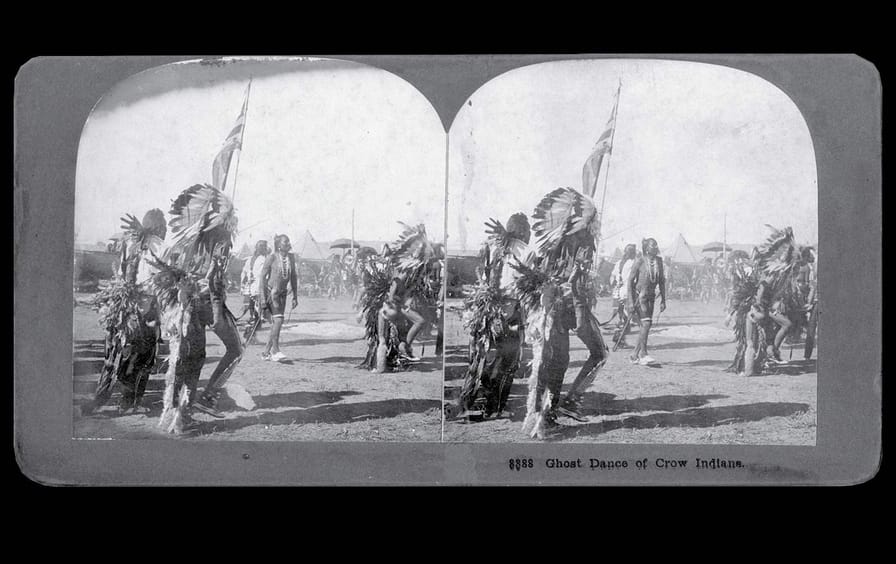 Nana`b`ojo goes to the feat. The fly saves the river (anishinabi).
Nana`b`ojo goes to the feat. The fly saves the river (anishinabi). - 09/12/2018 - Appearance of the Earth (Tuskegi).
- 09/10/2018 - Juan Chivaria.
- 08/09/2018 - Missing and killed: understanding the scale. The cops put bullets into the Indians with amazing speed. "Memory Walk" An epidemic of disappearances and murders.
- 06/09/2018 - Iktomi and the stupid girl. Iktomi and the old wife. Son Iktomi (Lakota).
- 05/09/2018 - Coyote and washchu. How did the Lakota originate? History of rabbits. How the Sun and Moon quarreled. Raccoon and crayfish. Rabbit and wapiti. Little mouse. (Lakota).
- 08/28/2018 - Wife for knowledge (Winnebago)
- 08/08/2018 - Characters from legends (short dictionary). Y.
- 02/08/2018 - Mato Ite. Mato Luzahan. Raymond Yellow Thunder. Inkpaduta. Chaska. Ted Tin Elk Sr. Sliced Nose. Marty Two Bulls.
- 07/31/2018 - Howling Wolf. Beaver. Roman nose. Ar-no-ho-wok.
- 07/10/2018 - Dennis Banks.
 Adam Beach. Annie Humphrey.
Adam Beach. Annie Humphrey. - 04/07/2018 - Red Battle Mace. American Horse. Amos Bad Oxheart. Black wapiti. Joseph Flying By.
- 03/07/2018 - Kate Bear.
- 02/07/2018 - Hastin Kla. Henry Chi Dodge. Barboncito. Kelly R. Vallo.
- 06/29/2018 - Dan George. John Slocum. Marvin Camel.
- 04/06/2018 - Characters from legends (short dictionary). E.
- 05/14/2018 - Juan Antonio. Ruby Modesto. Willie Boy.
- 11/04/2018 - Making a pen. Great day. Gordon Tutusis. A big bear. Voice of the Almighty.
- 07/04/2018 - Api-kai-is. Na-To-Sa-Pi. Crow Paw. Eloise Cobell. Pita Macan. Misty Upham. John Louis Clark. Coal.
- 03/14/2018 - Red Bird. Spoon Decora. Julius Drum. Lillian St. Cyr.
- 03/10/2018 - Ann Roberts. Tamanend. Charles Jornicake. Neolin. John Conner. Captain Pipe.
- 02/20/2018 - Chitto Harjo. Enea Ematla. Sophia Alice Callahan. Mali Francis. Big Warrior. Jerome Tiger. Josiah Francis. Hopotle Miko.
- 01/26/2018 - Black Bird.
 Big Deer Senior.
Big Deer Senior. - 01/14/2018 - Paula Gunn Allen. Alfonso Roybal. Pope.
- 07/01/2018 - Characters from legends (short dictionary). U.
- 12/19/2017 - Vernon Bellcourt. Clyde Bellcourt. Flat mouth.
- 08/12/2017 - Lucy Nicolar. Molly Spotted Deer.
- 11/02/2017 - Aripeka. Osceola. Alligator. Betty May Tiger Jumper. Bowlegs. Billy Bowlegs II. Billy Bowlegs III.
- 10/18/2017 - Jack Montgomery. Sequoia. Pulling Canoe. Nanie-hee. Talmadge Davis. Atakullaculla. Ostenako. Junalaska.
- 10/17/2017 - SuAnn Big Crow. Beatrice Medicine. Maria Pearson. Two Hits. David Bald Eagle. Zahn McClarnon. Zitkala-Sha.
- 09/27/2017 - Characters from legends (short dictionary). I.
- 09/19/2017 - Andrew Blackbird.
- 09/15/2017 - About language and words. Recording history. Big Bonfire Speech. "The history of America began with us."
- 06/17/2017 - What do you hear? What do you see? For the Black Hills! Hoya. There are no whites here.
 High grass. Slow motion. Stolen tent. East is a delicate matter.
High grass. Slow motion. Stolen tent. East is a delicate matter. - 05/28/2017 - Characters from legends (short dictionary). X.
- 05/24/2017 - Characters from legends (short dictionary). Ch.
- 05/17/2017 - Irene Bedard.
- 05/14/2017 - Characters from legends (short dictionary). C.
- 02/01/2017 - Capturing Turtle Island. Continued confrontation. A new round of struggle.
- 01/24/2017 - Characters from legends (short dictionary). W.
- 01/18/2017 - Old cloak (Tsimshian).
- 12/24/2016 - Meeting in paradise. Two Shoshoni. White fools. Mohican. Somewhere in Nevada. There are no Indians in hell. At the doctor.
- 11/19/2016 - Sherman Alexi.
- 12/11/2016 - Dogs and pepper spray. Deborah White Feather. Lessons from the Standing Stone. Mass arrest. Arrested. Tipi for Clinton. Arrests continue.
- 12/11/2016 - Manon Barbeau: "It's not mainstream." Occupation of the island of Lelu. Court battle.
- 10/31/2016 - Dance of the Ringing Dress.

- 10/26/2016 - Wallace Crazy Bear. Richard Oakes. Beautiful Lake. Decanisor. Scarroady. Alakuipa.
- 09/29/2016 - Kamiakin.
- 09/09/2016 - The last battle. We reject and protest! Appeal to the President. Oil pipeline blockade. Oilmen against the Sioux. UN requirement. Collision. Continuation of the war.
- 08/19/2016 - Black Hawk.
- 08/11/2016 - Condiaronok.
- 07/08/2016 - Mohawk named Vladimir.
- 03/08/2016 - Hehaka Gleshka. Ste-C-Tank. Crazy Horse. Helen Peterson.
- 08/02/2016 - Uncas. Oneka.
- 07/22/2016 - To a white person at the first meeting. Government and a dead horse. Whoa, Kitty! Three Indian old men. Magic moccasins. A pair of cowboy boots.
- 07/19/2016 - How to impress. Puzzle with a rooster. Indian paradise. Indian hell. At the bus stop. Tlinglit girl and whale. What can you say? What is courage.
- 06/26/2016 - The Yamasee War and Indian slavery.
- 06/20/2016 - Tendoy.

- 05/14/2016 - What the Black Elk did not say. The song is not about Hiawatha.
- 11/05/2016 - Little Raven.
- 02/05/2016 - Oka crisis in 1990.
- 04/22/2016 - Mulberry Creek Massacre.
- 03/03/2016 - Kuana Parker. Bison Hump. Gil Birmingham.
- 02/24/2016 - Kennecook.
- 01/21/2016 - Smohalla.
- 01/20/2016 - Marias River massacre.
- 10/12/2015 - John Trudell. Interview.
- 11/18/2015 - Characters from legends (short dictionary). T.
- 11/17/2015 - Characters from legends (short dictionary). S.
- 11/16/2015 - Characters from legends (short dictionary). R.
- 11/15/2015 - Characters from legends (short dictionary). P.
- 14/11/2015 - Characters from legends (short dictionary). O.
- 11/13/2015 - Characters from legends (short dictionary). N.
- 12/11/2015 - Characters from legends (short dictionary). M.
- 11/11/2015 - Characters from legends (short dictionary).
 L.
L. - 11/11/2015 - Sex trade on the reservation: the story of the confrontation of one Indian nation.
- 10/11/2015 - Characters from legends (short dictionary). K.
- 09/11/2015 - Characters from legends (short dictionary). I.
- 08/11/2015 - Characters from legends (short dictionary). З.
- 07/11/2015 - Characters from legends (short dictionary). Zh.
- 06/11/2015 - Characters from legends (short dictionary). E.
- 05/11/2015 - Characters from legends (short dictionary). D.
- 04/11/2015 - Characters from legends (short dictionary). G.
- 03/11/2015 - Characters from legends (short dictionary). V.
- 02/11/2015 - Characters from legends (short dictionary). B.
- 01/11/2015 - Peo.
- 01/11/2015 - Characters from legends (short dictionary). A.
- 10/20/2015 - Sitting Bull. Red Cloud.
- 10/13/2015 - Kidnapping in law. "Neglect of duties."
- 02/09/2015 - Arizona Apaches: fighting for their land.
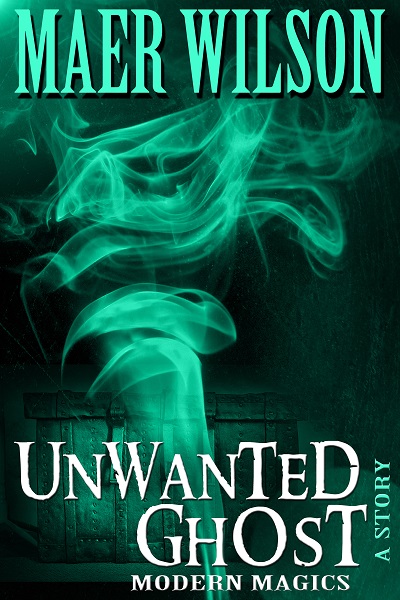
- 08/25/2015 - White Hair.
- 08/24/2015 - Squanto.
- 08/23/2015 - 10 facts you didn't know about Indians. Bob Haozus: let's talk "Indian style." I am a North American Indian.
- 01/08/2015 - Spiritual gifts of the Creator. Drum.
- 07/24/2015 - Potlatch. donation ceremonies.
- 06/23/2015 - Lacrosse.
- 06/19/2015 - Willow Wisdom (Osage).
- 11/06/2015 - Joseph de la Cruz.
- 06/06/2015 - Emily Pauline Johnson. Molly Brant. Ernest Benedict. Jay Silverheels. Charlie Hill.
- 06/04/2015 - They came for the children. Over 6,000 deaths. cultural genocide.
- 06/02/2015 - Juana Maria.
- 05/29/2015 - Obstetrics. The most important thing is love. Raising children among the Meskwaki.
- 05/24/2015 - Hetkala's little adventure.
- 05/21/2015 - Children are sacred creatures. Indian cradle.
- 05/17/2015 - Origin of the Pleiades (onondaga legend)
- 05/09/2015 - Bison.
 Bison trail. The death of bison.
Bison trail. The death of bison. - 05/05/2015 - Mystic artist Rance Hood.
- 04/29/2015 - Some interesting facts
- 04/27/2015 - Captivity stories. Missionaries: Alaska, California, Great Lakes.
- 04/24/2015 - Navajo and astronauts. The power of the icon. How President Bush got an Indian name. Siuper Vignan. In the mountain pasture. Horse riding.
- 14/04/2015 - If Santa Claus were an Indian. Time measurement. Anishinabi merchant. Clever sidekick. Good memory. Two old men. Blonde on the farm.
- 04/10/2015 - Indian dogs. Salish dogs.
- 04/09/2015 - Nooch "Black Hawk".
- 03/23/2015 - Legends of the American Indians. The Indian Problem of America (Chapter Ten).
- 03/22/2015 - Legends of the American Indians. The well-known riddle of the Blue Star Woman (chapter nine).
- 03/21/2015 - Tales of the American Indians. Dream about her grandfather (chapter eight).
- 03/20/2015 - Legends of the American Indians.
 Warrior's daughter (chapter seven).
Warrior's daughter (chapter seven). - 03/19/2015 - Legends of the American Indians. The path of testing (chapter six).
- 03/15/2015 - Statement by Arvol Watch Horse to the UN. "We're here to deliver that message."
- 03/13/2015 - Legends of the American Indians. Softhearted Sioux (chapter five).
- 03/12/2015 - Legends of the American Indians. Great Spirit (chapter four).
- 03/11/2015 - Legends of the American Indians. Indian teacher among the Indians (chapter three).
- 09/03/2015 - Legends of the American Indians. The School Days of an Indian Girl (Chapter Two).
- 03/07/2015 - Like a coyote scattered the stars (the legend of the pueblo of Cochiti).
- 03/06/2015 - Flood. Basket Woman (Haida Legends).
- 03/04/2015 - Legends of the American Indians. Impressions of Indian childhood (chapter one).
- 01/03/2015 - Cherokee blowguns.
- 02/24/2015 - Eagle feather symbolism (lambi legend).
- 02/19/2015 - Buffy St.
 Marie.
Marie. - 02/19/2015 - Corn planter. Tanacharison.
- 02/17/2015 - How the first stories came out of the earth. Snow Boy. (Lenape legends).
- 02/16/2015 - Ella Deloria. Robert Hill.
- 02/14/2015 - Mary Dorion.
- 12/02/2015 - How a coyote placed stars in the sky (wasco legend)
- 10/02/2015 - Monroe Tsatoki. James Ochia. Spencer Asa.
- 28/01/2015 - Susie Walking Bear.
- 01/25/2015 - Butterflies (papago legend).
- 01/20/2015 - There was no room for Indians in Jefferson's free empire. Unknown history of the country. Capture of America.
- 01/17/2015 - Rivalry over wives (kochichi legend).
- 01/17/2015 - Shiki Toklanni. Goyen. Lozen.
- 01/01/2015 - Mitchell Red Cloud.
- 12/22/2014 - Brief "educational program".
- 12/20/2014 - The Lost Bird of Wounded Knee. Rod Lowry. Natavista.
- 05/12/2014 - Mabel McKay. Elsie Comanche Allen.Thanadeltar.
- 11/30/2014 - Sachin Little Feather.
 Naomi Lang.
Naomi Lang. - 11/20/2014 - Bloody Knife. Tonasket.
- 11/18/2014 - Marriage traditions. Lakota. Cherokee.
- 11/13/2014 - Blue Eagle.
- 09/11/2014 - Sar-sarp-kin.
- 23/10/2014 - Language revival: Huma, Yurok, Cherokee, Ojibwe and others.
- 10/23/2014 - Dasoda-he. Kochis.
- 10/09/2014 - Elizabeth Peratrovich.
- 04/10/2014 - Sand Creek. Echo Sand Creek.
- 09/29/2014 - Will Sampson. Joseph Bruchak. Louis Ballard.
- 09/27/2014 - Mirror. White Thunder. Tukhulhulzote. Five Wounds and Rainbow.
- 09/18/2014 - Hagler.
- 07/09/2014 - Native Americans, prisoners of war. Why the Sioux are turning down $1.3 billion.
- 08/30/2014 - Leonard Peltier.
- 09/08/2014 - Russell Means.
- 16/07/2014 - "American Indians - Today's Questions Answered"
- 07/15/2014 - Mother Nature has her own culture, and this is the indigenous culture.
- 07/12/2014 - Two languages in the mind, but only one in the heart.

- 06/26/2014 - Seattle. Moses.
- 06/15/2014 - Treaty of Greenville 1795.
- 15/06/2014 - Indian Removal Act 1830. Cherokee Declaration of 1861.
- 06/11/2014 - Nakaidoclini. Natiotish. Jason Betzinez.
- 05/30/2014 - We are aligned with the Earth
- 05/26/2014 - It is fair that the people share what God has so generously sent them
- 19/05/2014 - They won't have life if we don't protect the water. Seizure of land in the Sioux reservation. Massive salt water leak.
- 05/05/2014 - Headhunters. Massacre on Cypress Hill. It's a crime to be an Indian.
- 04/05/2014 - Sappa Creek Tragedy
- 27/04/2014 - Earth Healing Dance
- 09/04/2014 - Navajo Flutist Andrew Thomas
- 03/30/2014 - Ochetikovin
- 03/28/2014 - Indigenous peoples' legal status and organizations in Canada. Indigenous property rights.
- 03/03/2014 - Indian marriages
- 01/03/2014 - Audrey Shenandoah
- 22/02/2014 - "We demand to be recognized as human beings"
- 21/02/2014 - Keepers of Wisdom
- 02/19/2014 - Sanctity of water
- 02/19/2014 - Origin of the Lakota people (Dwayne Bear Hollowhorn).
 Lakota time. Universe.
Lakota time. Universe. - 02/19/2014 - Red cry
- 02/18/2014 - Iktomi and the spirit of the wind. Iktomi and Beaver. Prairie rose. Star boy and seven sisters. Her seven brothers (Lakota).
- 14/02/2014 - Ancient Indian Beauty Secrets
- 11/02/2014 - Sacred Pipe
- 10/02/2014 - Navajo Language Immersion School. Textbook in the Navajo language.
- 02/07/2014 - "Lone Star" of Texas
- 01/29/2014 - "Gold belongs to a demon that devours all who seek it"
- 01/21/2014 - They must find what they lost
- 01/17/2014 - Yavapai-people of the sun
- 01/06/2014 - The history of the universe and the meaning of dreams. The rise of the myth. Rabbit calls for a truce. Oochigeas and the Invisible Youth (Abenaki).
- 29/12/2013 - About tattoos and hats
- 28/12/2013 - Wounded Knee. No right to life.
- 12/24/2013 - Ethics and principles
- 12/22/2013 - Warriors of the rainbow (Kree legend)
- 12/18/2013 - Briefly about the symbolism
- 12/16/2013 - Stereotypes of "hit" films
- 12/14/2013 - Heavy Necklace and the ghost of a woman.
 The Adventures of the Whirling Bison. Wolf Man. Chief Mountain. Buffalo berries. Origin Legend (Blackfoot).
The Adventures of the Whirling Bison. Wolf Man. Chief Mountain. Buffalo berries. Origin Legend (Blackfoot). - 13/12/2013 - Navajo long way
- 12/12/2013 - Sterilization as a way of "Western democracy" to her possession." You failed to destroy us.
- 06/12/2013 - Pemmican
- 03/12/2013 - The world of ghosts and spirits
- 03/12/2013 - Ambrosio Vilhalva
- 26/11/2013 - Protection of the sacred ways of life
- /21006 902 - What National Indian Heritage Month 9 means to me0006
- 26/11/2013 - Wovoka or the story of disappointed hopes
- 25/11/2013 - "This is how the Indians do it"
- 25/11/2013 - How the Indians got to America and not only 2013 - How Columbus created cannibals
- 11/24/2013 - 10 secrets of love
- 11/22/2013 - The seven directions
- 11/21/2013 - Our spirits do not speak English. St. Anne's boarding school.
- 21/11/2013 - Lozen and Tadotsei: true daughters of their people
- 11/21/2013 - A little about the Red Road
- 11/21/2013 - Violence and the law 2013 - "No to inaction!": history of the movement, main events
- 11/18/2013 - American Indian movement against sterilization and racist terror
- 11/18/2013 - "Twinks"
- 11/17/2013 - Indian elders about Castaneda and other "don Juans"
- 11/16/2013 - Stereotype about "drunken Indians"
- 11/16/2013 - "Brule": a life story in music
- 11/16/2013 - Those who were "Indian" in a "past life".

- 11/16/2013 - Keisha Crowther or the technology of the great deception
- 11/14/2013 - Hobbists About languages and not only
- 11/11/2013 - A country of unequal opportunities
- 09/11/2013 - Stereotypes and reality
- 06/11/2013 - We did not beat the drums
- 06/11/2013 - Thunder Rushing Through the Mountains
- 05/11/2013 - Seven Natural Laws 29/2013 - Culture you can't learn from books
- 28/10/2013 - Native Americans in World War II
- 28/10/2013 - Frank Waln. We are always ready! Oil 4 Blood
- 26/10/2013 - Where the seeds of racism grow
- 26/10/2013 - How the feminine has been distorted
- 10/21/2013 - Jena Mashoni. Robbie Robertson.
- 20/10/2013 - The Indian as a warrior
- 18/10/2013 - The battle for their land
- 17/10/2013 - What is it like to be an indigenous people in the 21st century?
- 10/15/2013 - The development of stereotypes
- 10/14/2013 - I was born with bronze skin
- 10/12/2013 - How America was "opened" 09/10/2013 - "And who is this person that you read to me about?"
- 09/10/2013 - Pocahontas Hostage of Myth
- 04/10/2013 - New Age Mystics, Healers and Their Ceremonies
- 03/10/2013 - US Crisis
- 03/10/2013 - Respect for Timeliness
- 09/30/2013 - Native American character
- 09/27/2013 - Ya'at'ee hello in Navajo
- 09/27/2013 - Aboriginal rights in Canada
- 09/27/2013 - We have always been here
- 09/27/2013 - Everything for the journey
- 09/27/2013 - Alimentary experiments on the natives of Canada
- 26/09/2013 - Five stereotypes about Indians most common in movies - First Nations March
- 09/25/2013 - March of Remembrance
- 09/25/2013 - "Indian" Q&A
- 09/24/2013 - Survival Strategy
- 09/21/2013 - Anna May06
- 09/21/2013 - Echoes of events at Wounded Knee
- 09/21/2013 - Nunadautsunt or "the path where we cried"
- 09/20/2013 - This is something that no one will ever take away from me
- 09/18/2013 - Ecological genocide
- 09/18/2013 - Wilma Mankiller
- 09/13/2013 - "We came here to talk about freedom"
- 09/13/2013 - We have the right!
- 09/13/2013 - Modernization of the sawmill
- 09/12/2013 - He walked the "Trail of broken contracts"
- 09/11/2013 - Holocaust
- 09/11/2013 - Original fashion.
 Honor and freedom.
Honor and freedom. - 09/11/2013 - Religious Gestapo
- 09/11/2013 - "A story never told"
- 09/11/2013 - "Let everything Indian in you die" or "Welcome to USA"! Indian schools.
- 11/09/2013 - Ted Nolan - about Indian life and hockey
- 09/09/2013 - We will win now
- 09/09/2013 - How the American Indian Movement was born
- 09/09/2013 - With my own eyes
- 09/09/2013 - "Indian problem"
- 09/09/2013 - From Ugra to California
- 09/09/2013 - Blue Butterfly from Stockbridge Mohicans
- 09/09 - Reservation Redbone Rock
- 07/09/2013 - Lakota Prophecies
- 07/09/2013 - Shoshoni Playing
- 07/09/2013 - Guatemalan Genocide Policy
- 07/09/2013 - Yeleuston Bison
- 07/09/2013 - From conversations with Paul Ghost Horse
- 09/07/2013 - Conflicting positions on the status of Indian tribes
Fokine's ballet The Phantom of the Rose (The Vision of the Rose) (Le Specter de la Rose)
Ballet to music by Carl von Weber in one scene.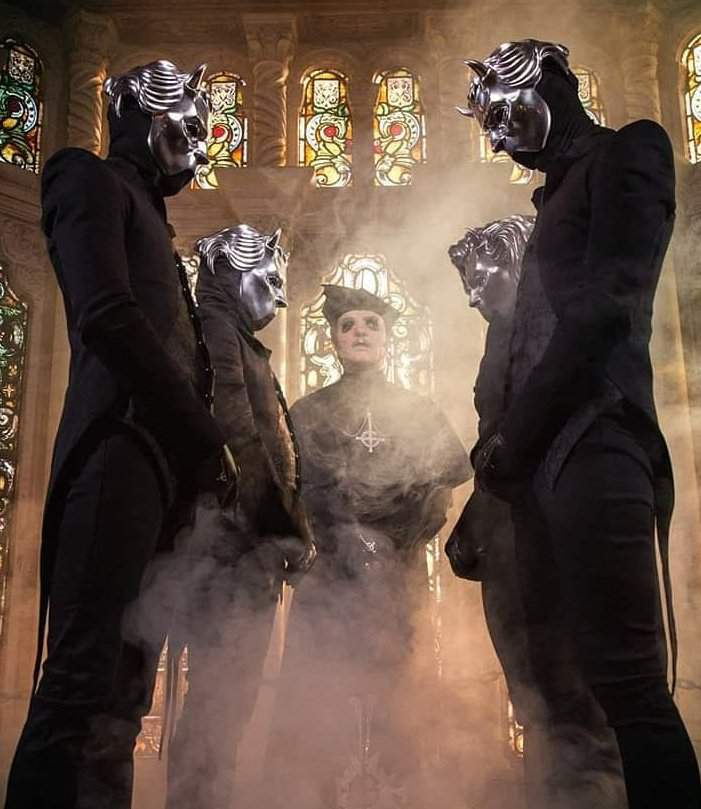 Screenwriter J. L. Vaudoyer, choreographer M. Fokin, artist L. Bakst, conductor N. Cherepnin.
Screenwriter J. L. Vaudoyer, choreographer M. Fokin, artist L. Bakst, conductor N. Cherepnin.
The premiere took place on April 19, 1911 at the Russian Ballet of Sergei Diaghilev, Monte Carlo.
Characters:
- Girl
- Rose Ghost
The action takes place after a ball in the middle of the 19th century.
Creation history
In 1819, the thirty-three-year-old Weber was in the prime of his creative powers: his famous opera The Free Gunner was on the way. On July 28, in a tavern located in a former mill, Weber came up with the idea to create a piano work from several waltzes connected to each other. This is how the first poetic composition appeared, from which, perhaps, the most famous waltzes of other composers grew, up to Chopin's waltzes and Glinka's Fantasy Waltz.
Weber's waltzes formed into a program composition, the contents of which the composer told one of his friends. Introduction - a meeting at the ball of a young man and a girl. He invites her, she refuses; he insists, she agrees. They are dancing. In the middle of the dialogue is a declaration of love. Dance code - parting. The girl leaves, there is silence. In 1841, the remarkable French composer Hector Berlioz, a great admirer of Weber, instrumentalized Invitation to the Dance, and this music took on a second, orchestral life.
He invites her, she refuses; he insists, she agrees. They are dancing. In the middle of the dialogue is a declaration of love. Dance code - parting. The girl leaves, there is silence. In 1841, the remarkable French composer Hector Berlioz, a great admirer of Weber, instrumentalized Invitation to the Dance, and this music took on a second, orchestral life.
In 1910, Diaghilev, the organizer of the Russian Seasons in Paris, announced to the Committee of the Seasons his intention to form a permanent troupe, the Ballets Russes. M. Fokin (1880-1942) was appointed its choreographer. Fokin immediately began to form a repertoire that was distinguished by originality and innovative solutions. It included, in particular, previously staged by him "Carnival", "Polovtsian Dances" and "Scheherazade". For the premiere of the troupe Vaslav Nijinsky, who was distinguished by amazing plasticity, the poet Jean-Louis Vaudayer suggested creating a ballet on the theme of the poem by Théophile Gautier (1811-1872):
Wipe away the sparkling tears,
The hour of awakening has come.
Look - I'm just the ghost of a rose,
What did you pin to the ball.
Your hand plucked me,
Still covered with dew
And in the noisy whirlwind of the carnival
I was with you all evening.
Now is not the time for reproach:
I am so envied, loving!
And who would not give their whole life,
To be so close to you!
I heard death threats,
I didn't forget anything.
The rose ghost dances all night
At your head.
Don't be afraid, in deathly silence
I don't sing De profundis.
My soul is fragrance,
And I blossom in paradise.
Fokine, fired up with this idea, chose Weber's "Invitation to Dance" orchestrated by Berlioz for the new ballet. The play premiered on April 19, 1911 in Monte Carlo. The artist A. Benois wrote about the performance that it was "a graceful trifle in the style of salon romantic ballads of the 1830s." However, this "trifle" has been living for a century without fading.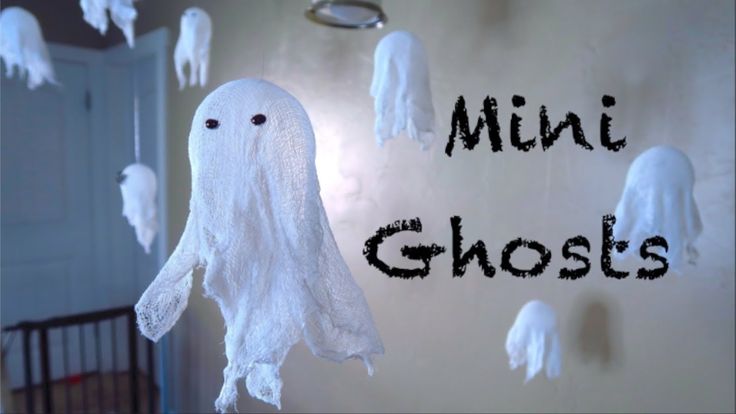 The choreography of the ballet is based on a comparison of the dancer's aerial technique with the languid ground dance of his partner, whirling on her fingers, barely moving her arms and occasionally raising her eyelids, heavy in sleep. Dance movements arise from the plastic embodiment of a climbing, flowering, fragrant plant. The jump through the window, performed by the Phantom, literally flying off the stage, as if ascending into the sky, has also become legendary.
The choreography of the ballet is based on a comparison of the dancer's aerial technique with the languid ground dance of his partner, whirling on her fingers, barely moving her arms and occasionally raising her eyelids, heavy in sleep. Dance movements arise from the plastic embodiment of a climbing, flowering, fragrant plant. The jump through the window, performed by the Phantom, literally flying off the stage, as if ascending into the sky, has also become legendary.
The illusiveness of the ballet was also emphasized by the artist L. Bakst, who dressed Nijinsky, who danced the Phantom of the Rose, in a leotard covered with lilac-pink petals, and Karsavina, the Girl, in a long silk dress with flounces and a bonnet tied under the chin with long ribbons. Bakst's artistic design essentially determined the exposition of the part of the Girl, which was almost not revealed choreographically. The image created by Nijinsky in this performance became a symbol of the dancer for a long time.
Scene
An austere girl's room, the walls of which converge in the depths at two high windows. The Girl, returning from her first ball, wearily sinks into an armchair, a withered rose falls from her hands. The scent of the flower materializes in the beauty's dreams; The ghost of a rose circles around her, drags her along, and then carefully lowers her into an armchair, gives her an elusive kiss and flies away through the window.
Music
Weber's suite "Invitation to Dance" is a chain of poetic, airy and gentle waltzes, dressed in colorful orchestral attire.
L. Mikheeva
In 1911, after two successful ballet "Russian Seasons", Sergei Diaghilev decided to create his own permanent troupe, which could function not only in the summer during the holidays of artists from St. Petersburg and Moscow. The premieres were Tamara Karsavina and Vatslav Nijinsky, for whom (after his scandalous removal from the Mariinsky Theatre) a new company was basically created.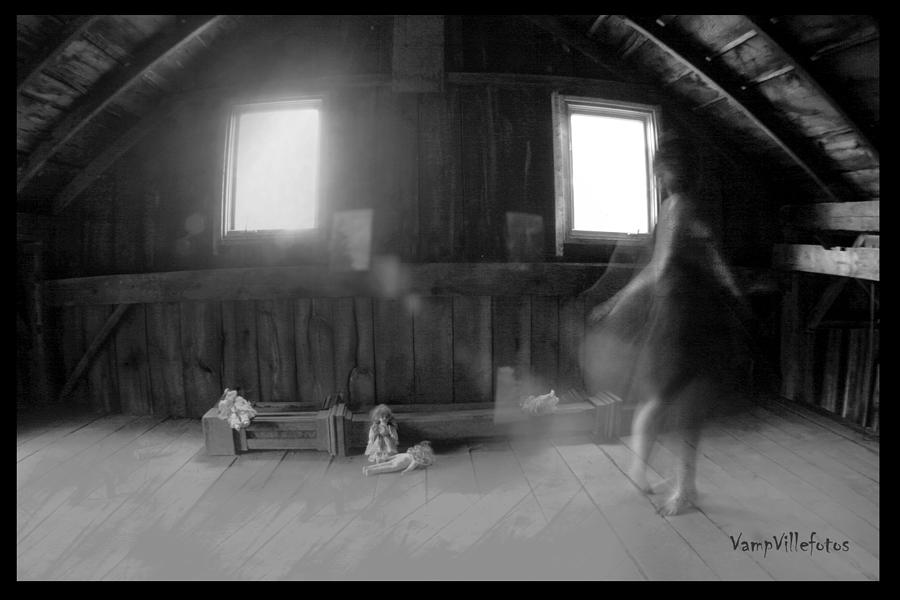 Mikhail Fokin was contracted as choreographer for the next two years, without the right to dance even his own ballets. The troupe's rehearsal base was an elegant and comfortable theater in Monte Carlo.
Mikhail Fokin was contracted as choreographer for the next two years, without the right to dance even his own ballets. The troupe's rehearsal base was an elegant and comfortable theater in Monte Carlo.
The first premiere of the new troupe, Le Spectre de la Rose, took place there. The ballet was composed at the suggestion of the French poet Jean-Louis Vaudoyer, a great admirer of Diaghilev's ballet. The theme of the ten-minute miniature was the lines from the poem by Théophile Gauthier: "I am the ghost of the rose that you wore yesterday at the ball." The music was the piano piece by the German romanticist Carl Maria Weber "Invitation to the Dance" orchestrated by Hector Berlioz.
Here is the testimony of the troupe director Sergei Grigoriev: “A room with two large open windows overlooking a moonlit garden served as the backdrop for the ballet. The girl - Karsavina has just returned from the ball. Holding a rose in her hands, she sinks into an armchair, falls asleep and has a dream - a kind of vision personified by Nijinsky, which, as it were, floats through the window.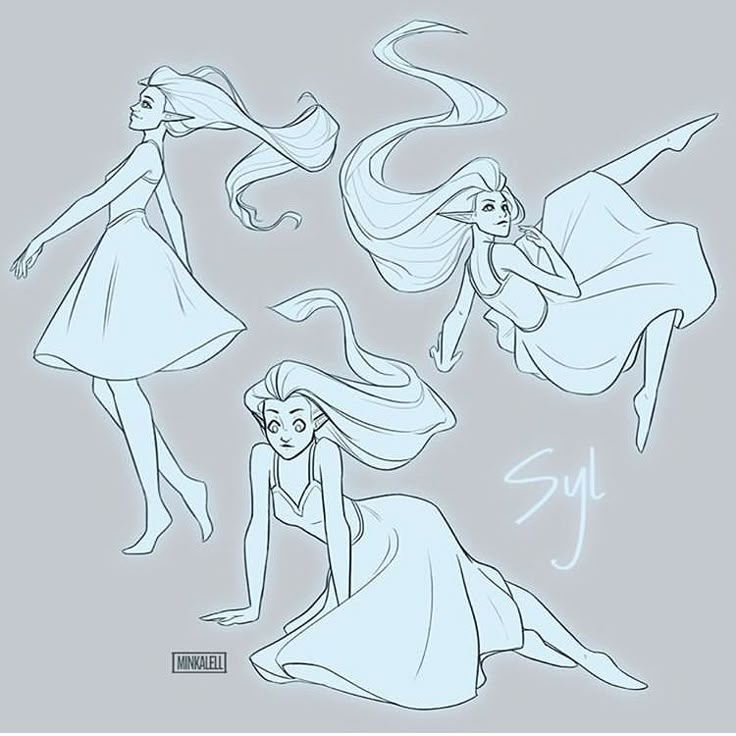 After a short solo introduction, the “spirit of the rose” lifts the girl from the chair, and they dance a magnificent duet. This waltz was so heavenly, so romantic, that it was actually hard to believe that this was not a dream. In the finale, the vision flies out the window again - with a jump , which Nijinsky performed with such rare skill that it gave the impression of a genuine flight. The Phantom of the Rose was a huge success, and Diaghilev was happy, anticipating another triumph in Paris.
After a short solo introduction, the “spirit of the rose” lifts the girl from the chair, and they dance a magnificent duet. This waltz was so heavenly, so romantic, that it was actually hard to believe that this was not a dream. In the finale, the vision flies out the window again - with a jump , which Nijinsky performed with such rare skill that it gave the impression of a genuine flight. The Phantom of the Rose was a huge success, and Diaghilev was happy, anticipating another triumph in Paris.
Lev Bakst dressed Nijinsky in a leotard covered with lilac-pink petals, and Karsavina in a long silk dress with flounces, a bonnet on her head, tied with ribbons under her chin. Alexandre Benois called the new ballet only “a grandiose trifle in the style of salon romantic ballads of the 1830s,” although the characters of the ballet and the general mood of the performance reminded contemporaries of rather mysterious characters from the paintings of Konstantin Somov.
Mikhail Fokin recalled the nature of the choreography: “I want to say about "Spectre", as a composition, that using all the resources of classical ballet, I considered this production to be one of the achievements of the new ballet. It did not have a dance to show the technique. The dance is expressive all the time. A very new and beautiful theme of the Girls' dance. With her eyes closed, she seeks, invoking her Vision. Specter in no way resembles an ordinary dancer performing his own variations for the pleasure of the audience. This is the spirit. This is a dream. This is the aroma of a rose, the caress of its delicate petals, and much more, for which no definitive words can be found, but this is by no means a “cavalier”, not a “ballerina's partner”. The technique of the hands in this ballet is completely different from the strong, correct hands of the old ballet. The hands live, sing, and do not perform a ‘variation.’ The fact that Nijinsky was not masculine, some kind of sexless, gave a special charm to his role, made him the most suitable for it.”
It did not have a dance to show the technique. The dance is expressive all the time. A very new and beautiful theme of the Girls' dance. With her eyes closed, she seeks, invoking her Vision. Specter in no way resembles an ordinary dancer performing his own variations for the pleasure of the audience. This is the spirit. This is a dream. This is the aroma of a rose, the caress of its delicate petals, and much more, for which no definitive words can be found, but this is by no means a “cavalier”, not a “ballerina's partner”. The technique of the hands in this ballet is completely different from the strong, correct hands of the old ballet. The hands live, sing, and do not perform a ‘variation.’ The fact that Nijinsky was not masculine, some kind of sexless, gave a special charm to his role, made him the most suitable for it.”
It is known that the Russian translation of the title of this ballet varies. "Ghost" is closer to the French original Specter, however the choreographer preferred the term "Vision". Probably, the “ghost” seemed to him close to mystical terminology, and with the word “vision” Fokin emphasized that the character is only seen, dreams of the Girl, that is, it is subjective. Nevertheless, in our opinion, the phrase "Ghost of the Rose" sounds better in Russian.
Probably, the “ghost” seemed to him close to mystical terminology, and with the word “vision” Fokin emphasized that the character is only seen, dreams of the Girl, that is, it is subjective. Nevertheless, in our opinion, the phrase "Ghost of the Rose" sounds better in Russian.
The stage fate of the ballet turned out to be ambiguous. On the one hand, many light-footed premieres chose and continue to choose The Phantom of the Rose for their "benefit performances", on the other hand, it is difficult to determine what is left of Fokine's choreography in the ballet, and most importantly, of the spirit of his work. This will become clear to every attentive viewer if he compares the above statement of Fokine with those, as a rule, powerful jumps of another very brutal performer of the male part.
Perhaps only the famous Russian dancer Vladimir Malakhov, thanks to his unique natural gifts and subtle art of stylization, can be considered close to the choreographer's intention. Nina Alovert, a researcher of the dancer's creativity, explains: “Malakhov manages to create the illusion of the appearance of a fairy-tale creature, an elf, as if a flower has flown out of a cup.

